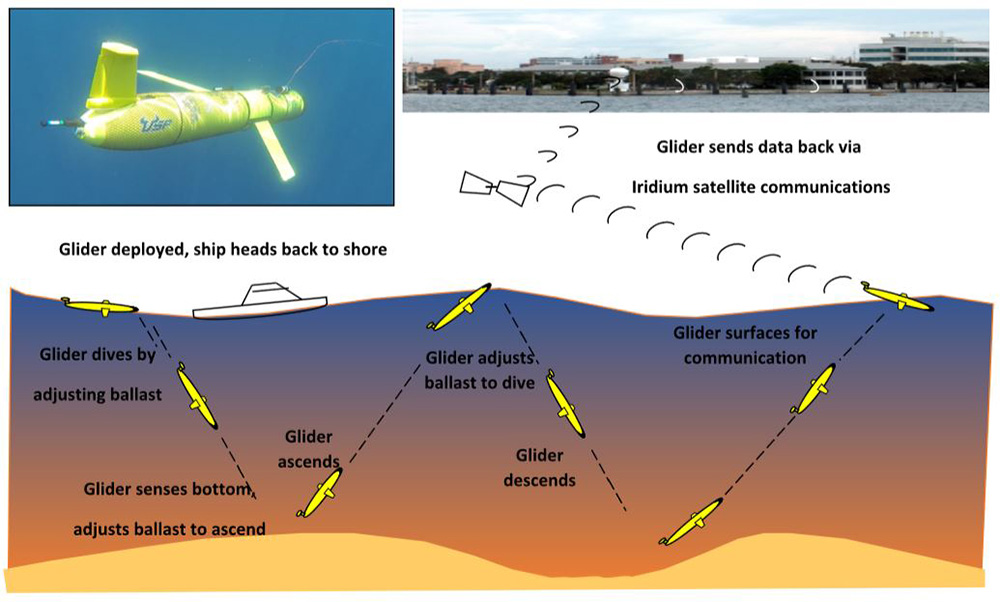Overview
About
The USF College of Marine Science has a fleet of seven operational Teledyne Webb Research gliders it uses as a cost-effective research alternative to ship-board science.
Gliders are autonomous robots that traverse through the water to collect a suite of biological (any biomass from plankton to fish), physical (temperature, salinity, density, currents), and chemical (nutrients, oxygen) data that helps us better understand the ocean. They are utilized throughout the country and the world to provide valuable insight to complex problems by academic, government, and military institutions.
We affectionately think of gliders as seagoing pickup trucks; we can load all kinds
of useful sensors on the vehicle to simultaneously serve as our eyes and ears in the
ocean when we can’t physically be there.
Gliders are robust and reliable drones that dive and ascend using ballast weight and
propel themselves forward on wings. Once deployed,they operate mostly autonomously–moving
hundreds of miles over weeks to months. They can collect data from the surface to
the seafloor, and each time they surface, they relay that information back to scientists
on shore via satellite.
Gliders help us find answers to questions such as the following
- Where will oil go during an oil spill, not just at the surface but all throughout the depths of the ocean?
- How does red tide evolve and where will it go in the coming days and weeks?
- If a hurricane passes over an area, how much strength-generating heat is in the water beneath the surface?
- Just how many groupers, snappers, amberjack and other important fish are out there?
More information about gliders
- https://ioos.noaa.gov/project/underwater-gliders/
- https://oceanobservatories.org/marine-technologies/gliders/
- https://spraydata.ucsd.edu/
- https://apl.uw.edu/project/project.php?id=seaglider
- https://rucool.marine.rutgers.edu/data/underwater-gliders/
